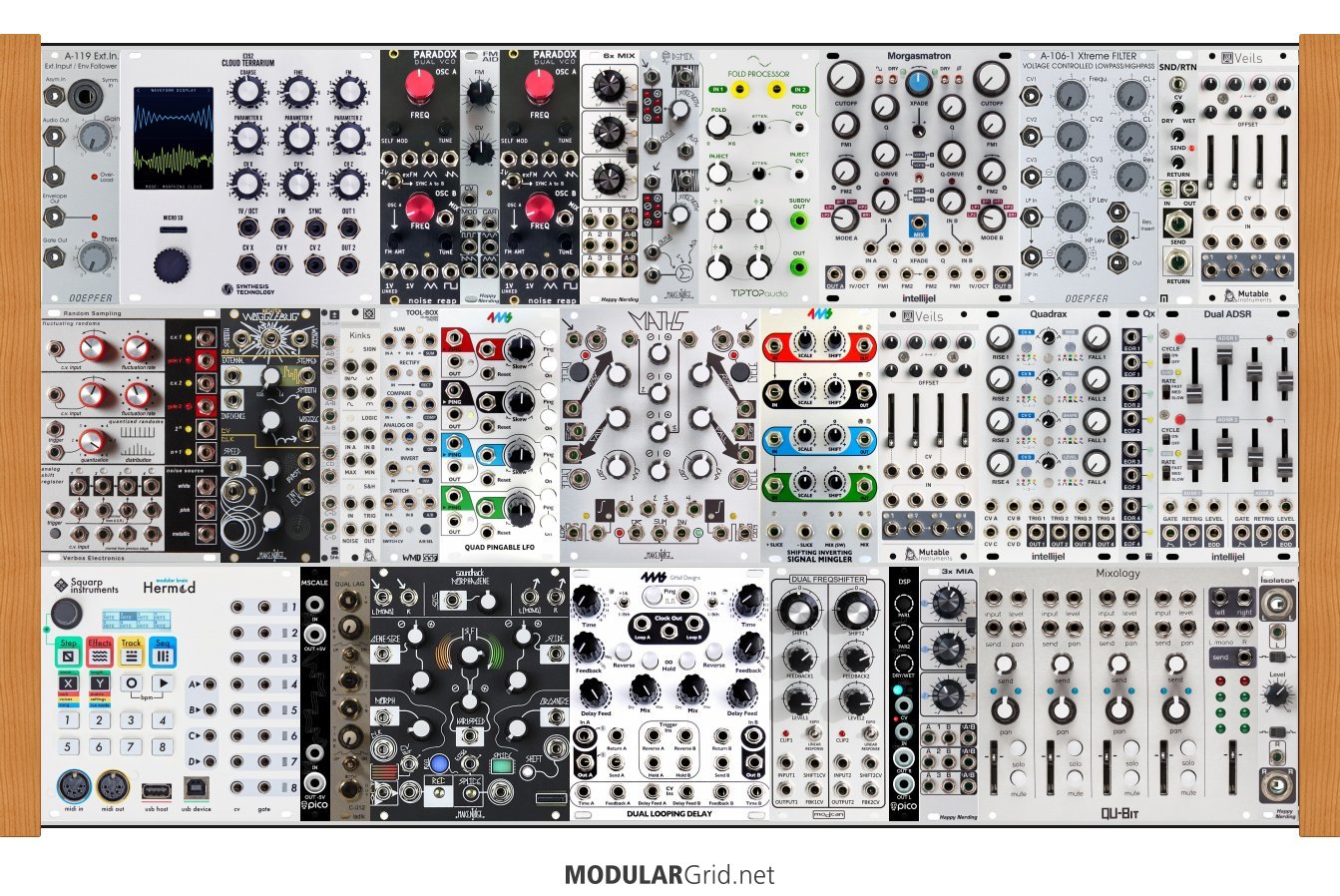Actually, I did a build just the other day that's a good example of how I proceed with groupings and flow:

OK...so, in this setup, the TOP row is audio sources and modifiers. And in that row, things flow from left (the A-119) to right (Veils).
Then the next row is random sources and modulation manipulation until you get to the QPLFO, then you're in modulation source territory. Dead-center in that are the key manipulation modules for CV and modulation, in this case they're a SISM and another Veils. The idea here is that you can spread the outputs from this to patchpoints above and below the row, which would make it easier to differentiate between your audio path and the various mod sources/destinations.
Bottom row has a Hermod which is also intended to drive an M32...so in the lower-left corner, you have the Hermod, the MScale, and a dual lag generator for direction-dependent portamento with two of the Hermod outputs. Then we get back into audio, as the system's effect processing sits between the lag gen and the mixer. This particular build ALSO had an emphasis on looping, so I co-located the two looping modules (Morphagene, DLD) near the mixer since they should be pulling audio from it and then sending it back there. Then at the row's end, you see a 3xMIA for summing when needed, a Mixology performance mixer, and an Isolator for output isolation, plus it adds some transformers which you can 'hit' a little hard for a touch of warmth from transformer saturation.
So, when you study this, the Hermod is where the various CVs originate...and flow upwards to the top row, with the ability to make use of the Verbos Random Sampling's analog shift register for arpeggiation/tesselation purposes. Then the signal flow goes across that top audio row, and back down to the mixer, with the modulation row able to "hit" anything in either the top or bottom rows.
Now, if you've ever had the pleasure of working with an ARP 2600, this flow pattern should seem familiar. Technically, the 2600 has two "rows" to it, with the EGs actually being in the top row before the VCA, and the output/reverb mixer is also up there. But otherwise, the builds I do tend to replicate something of that same pattern...because it's worked for 50 years, so why change? Alan Pearlman and his team nailed the flow on that synth, and LOADS of synths since then follow their own variations on it. The only time I deviate from this is when the top row is stuffed with sources, and the audio modifiers have to go downward along the right side. In that case, I defer to Nyle Steiner's Synthacon design, placing the CV/mod modules to the left end, and filters, waveshapers, LPGs, etc on the right so that you can easily break out mod sources to go to the other end of the row(s) for use there. Again, this lets the modulation, etc "fan out" from its section to wherever those signals are needed in the audio path.

